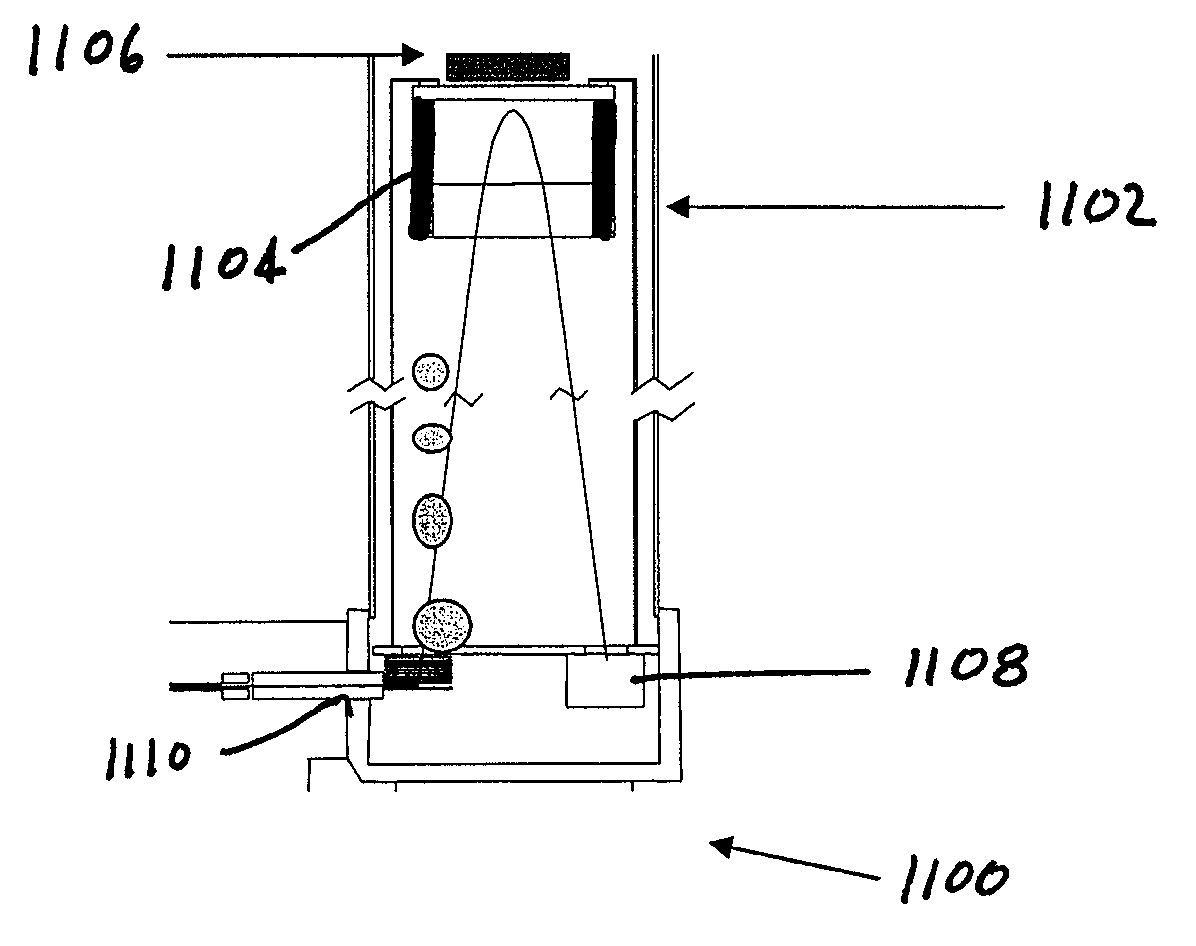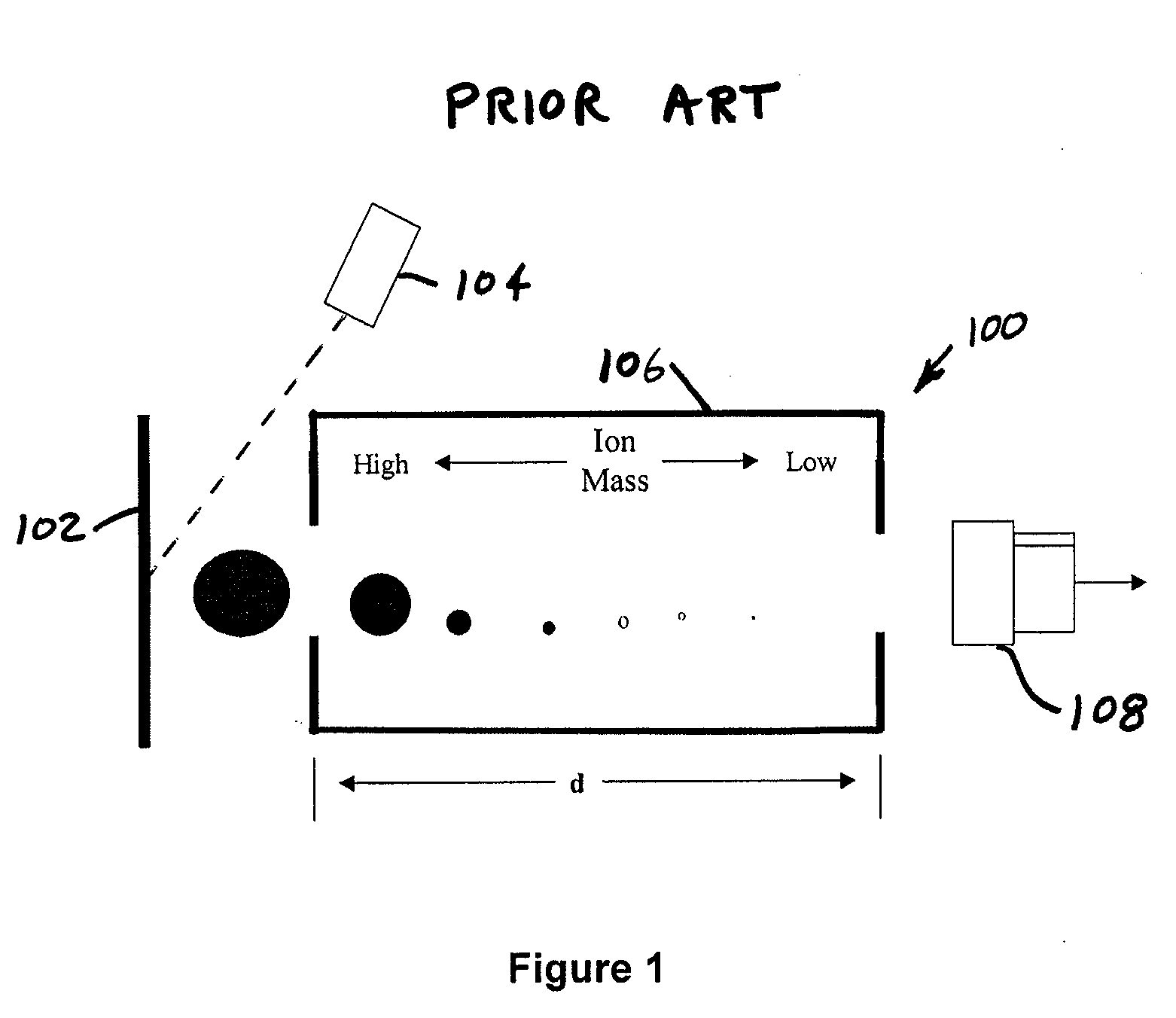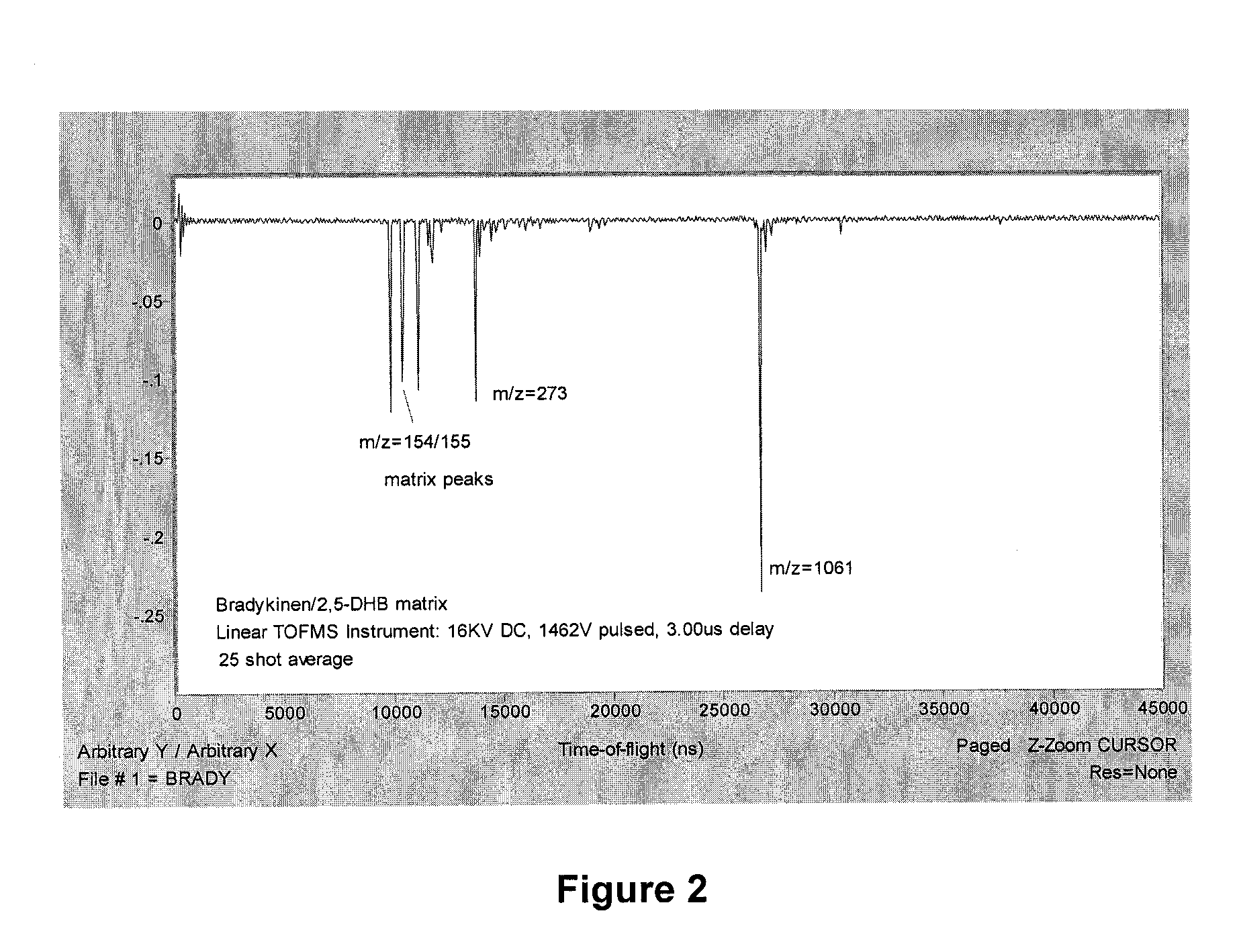Resistive glass structures used to shape electric fields in analytical instruments
a technology of resistive glass and electric fields, applied in the field of mass spectrometers, can solve problems such as reducing electrical resistan
- Summary
- Abstract
- Description
- Claims
- Application Information
AI Technical Summary
Benefits of technology
Problems solved by technology
Method used
Image
Examples
Embodiment Construction
[0040] The lead oxide within lead silicate bulk glass is reacted with hydrogen at temperatures ranging from 350-550° C. The chemical reaction occurs on the surface of the work piece, not in the interior of the bulk material. The chemical reaction proceeds as follows:
Pb2O5+H2→Pb2Ox+H2O
The reaction yields a semi-conductive form of lead oxide that is uniformly distributed over all surfaces of the work piece. The electrical resistance along the surface is a function of the process parameters of temperature, time, the pressure and composition of the hydrogen / oxygen cover gas, and the composition of the lead silicate glass at the reduction surface.
[0041] In order to obtain an electrical resistance that varies along the length of the work piece, it is necessary to either vary the process parameters locally along the piece or change the base material in some way. The hydrogen reduction process is performed in large furnaces with significant gas flows in order to prevent local process va...
PUM
| Property | Measurement | Unit |
|---|---|---|
| pressure | aaaaa | aaaaa |
| temperatures | aaaaa | aaaaa |
| length | aaaaa | aaaaa |
Abstract
Description
Claims
Application Information
 Login to View More
Login to View More - R&D
- Intellectual Property
- Life Sciences
- Materials
- Tech Scout
- Unparalleled Data Quality
- Higher Quality Content
- 60% Fewer Hallucinations
Browse by: Latest US Patents, China's latest patents, Technical Efficacy Thesaurus, Application Domain, Technology Topic, Popular Technical Reports.
© 2025 PatSnap. All rights reserved.Legal|Privacy policy|Modern Slavery Act Transparency Statement|Sitemap|About US| Contact US: help@patsnap.com



